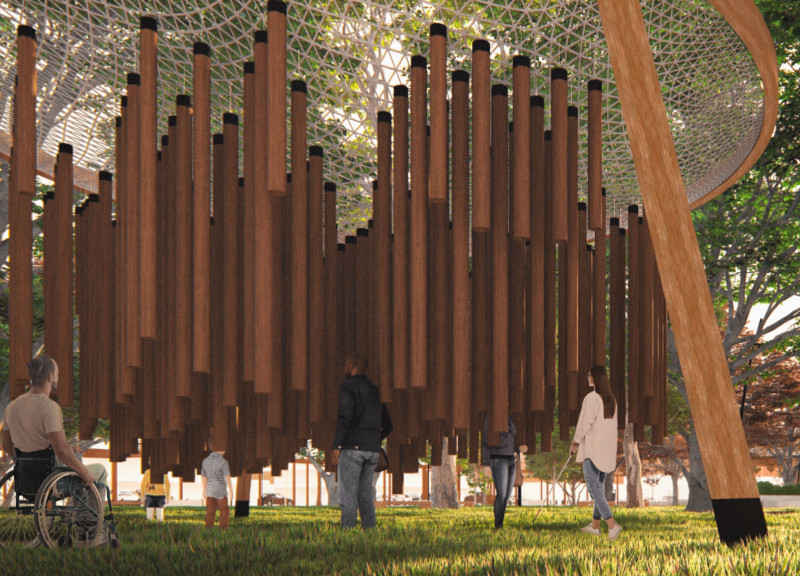5 key facts about this project
The Forest of Senses is an architectural pavilion designed to create an immersive experience that engages multiple senses. Located in a natural environment, the structure serves as a space for reflection, interaction, and exploration. The design focuses on the relationship between humans and wood, using the material's inherent properties to foster a connection with nature. The pavilion invites visitors to engage with their surroundings in a meaningful way.
Structure and Materiality
Constructed from laminated wood, the pavilion has a solid and appealing structure. The design features a halo shape supported by four pillars, which connect the form to the landscape. This choice of material highlights the importance of wood in architecture while exploring new ways to use it. The combined elements create an inviting form that stands out and encourages visitors to explore.
Sensory Engagement
Inside, a tensioned mesh supports a collection of hollowed-out wood pieces that hang at different heights. As visitors walk through the space, these elements produce sounds, adding an auditory dimension to the experience. This arrangement invites exploration and interaction, pushing users to engage with the structure beyond mere visual appreciation. The acoustic quality enhances the sensory journey, making users more aware of their surroundings.
Inclusivity and Accessibility
The design prioritizes inclusivity, allowing access for individuals with reduced mobility and visual impairments. This attention to diverse needs fosters a welcoming atmosphere for all visitors. Clear pathways guide movement through the pavilion, supporting a seamless interaction with the space. By accommodating various user experiences, the pavilion establishes a stronger relationship between architecture and its occupants.
As visitors traverse the pavilion, they experience an interplay of natural light and textures created by the wood. This combination subtly highlights the unique shapes of the suspended pieces, making the environment feel alive and ever-changing.




















































